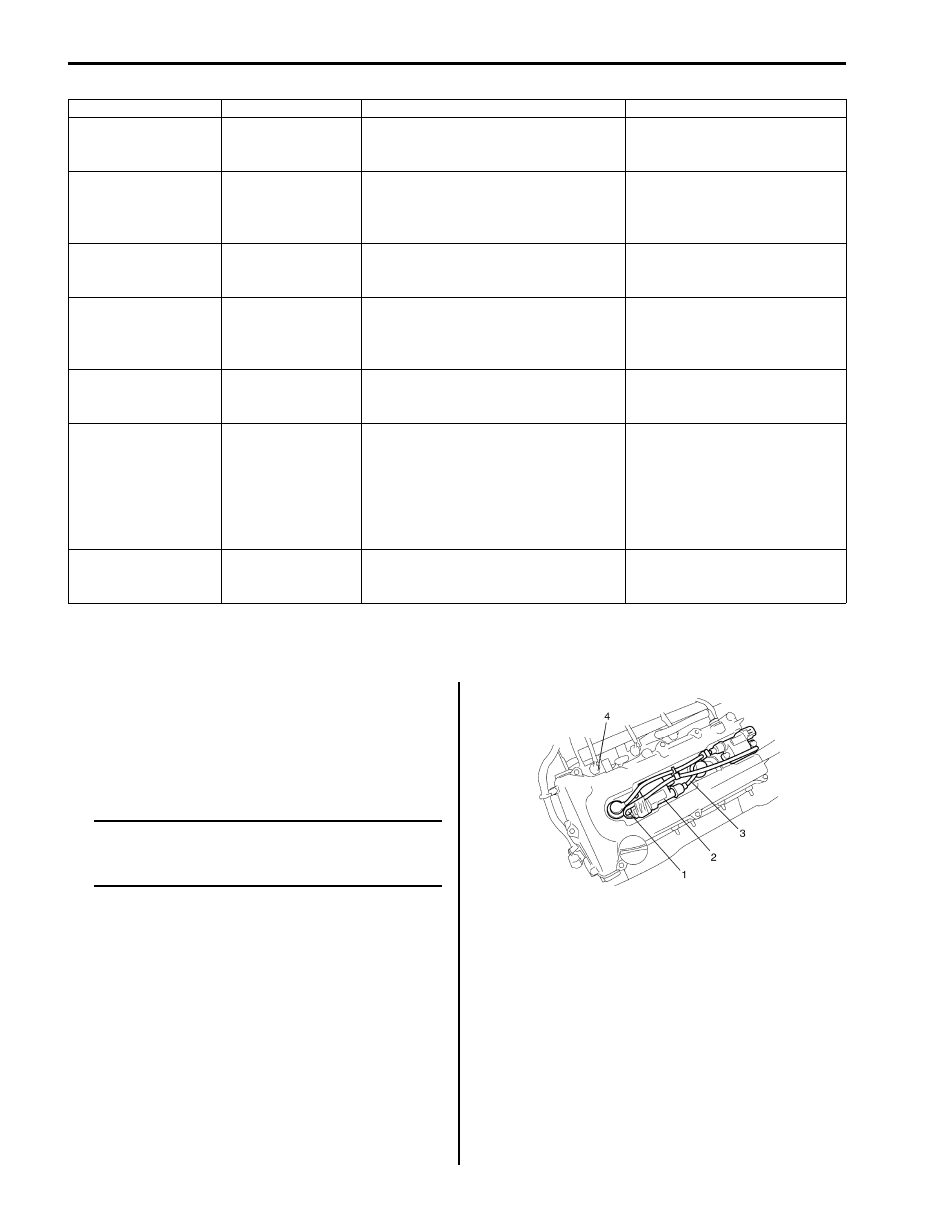Suzuki Grand Vitara JB416 / JB420. Manual - part 84

1D-4 Engine Mechanical: For M16A Engine with VVT
Targeted Timing Varying Operation
Diagnostic Information and Procedures
Compression Check
S5JB0A1414001
Check compression pressure on all 4 cylinders as
follows:
1) Warm up engine to normal operating temperature.
2) Stop engine after warming up.
NOTE
After warming up engine, place transaxle
gear shift lever in “Neutral”, and set parking
brake and block drive wheels.
3) Disconnect ignition coil couplers (1).
4) Remove ignition coil assemblies (2) with high-
tension cord (3).
5) Remove all spark plugs.
6) Disconnect fuel injector wires (4) at the coupler.
Driving condition
Valve timing
Target of control
Effect
Engine running at idle
speed
Most retarded
To shorten the valve opening overlap in
order to prevent the exhaust gas
counterflow to intake manifold.
Stabilization of the engine
rotation at idle speed.
Average engine load
range
To the advanced
side
To lengthen the valve opening overlap
in order to enhance the internal
exhaust gas recirculation and reduce
the pumping loss.
Improvement of the fuel
efficiency.
Lowering of the exhaust
emission.
Light engine load
range
To the retarded side
To shorten the valve opening overlap in
order to prevent the exhaust gas
counterflow to intake manifold.
Keeping of the engine stability.
Low or average
engine speed range
with heavy engine
load
To the advanced
side
To advance the closing timing of the
intake valve in order to improve the
volumetric efficiency.
Improvement of generating the
engine torque at low and
average engine speed.
High engine speed
range with heavy
engine load
To the retarded side
To retard the closing timing of the
intake valve in order to improve the
volumetric efficiency.
Improvement of generating the
engine power.
Low engine coolant
temperature
Most retarded
To shorten the valve opening overlap in
order to prevent the exhaust gas
counterflow to intake manifold and
reduce the fuel increasing.
To slow the fast idle speed of the
engine as a result of stabilizing the
engine idling.
Stabilization of the fast idling of
the engine.
Improvement of the fuel
efficiency.
At engine starting and
stopping
Most retarded
To shorten the valve opening overlap in
order to prevent the exhaust gas
counterflow to intake manifold.
Improvement of start ability.
I2RH0B140003-01